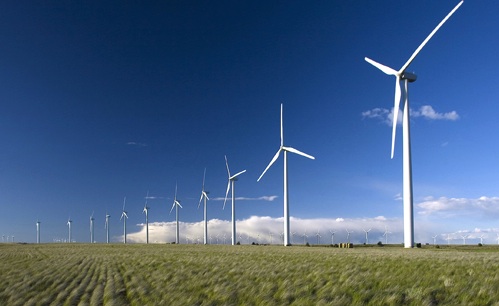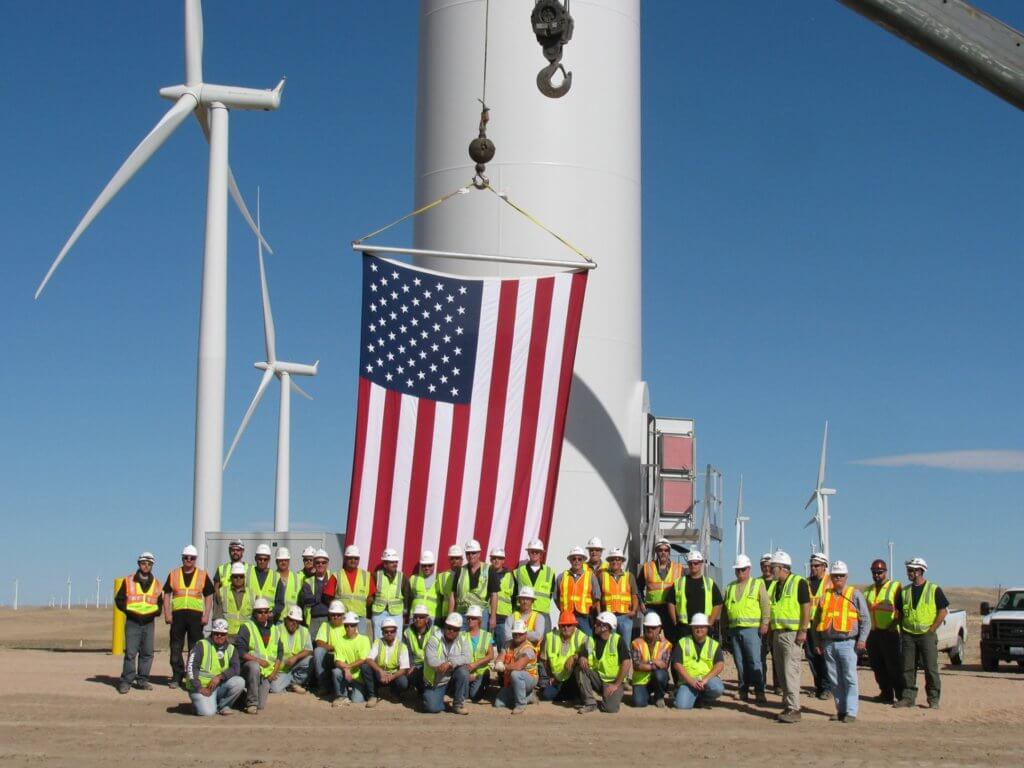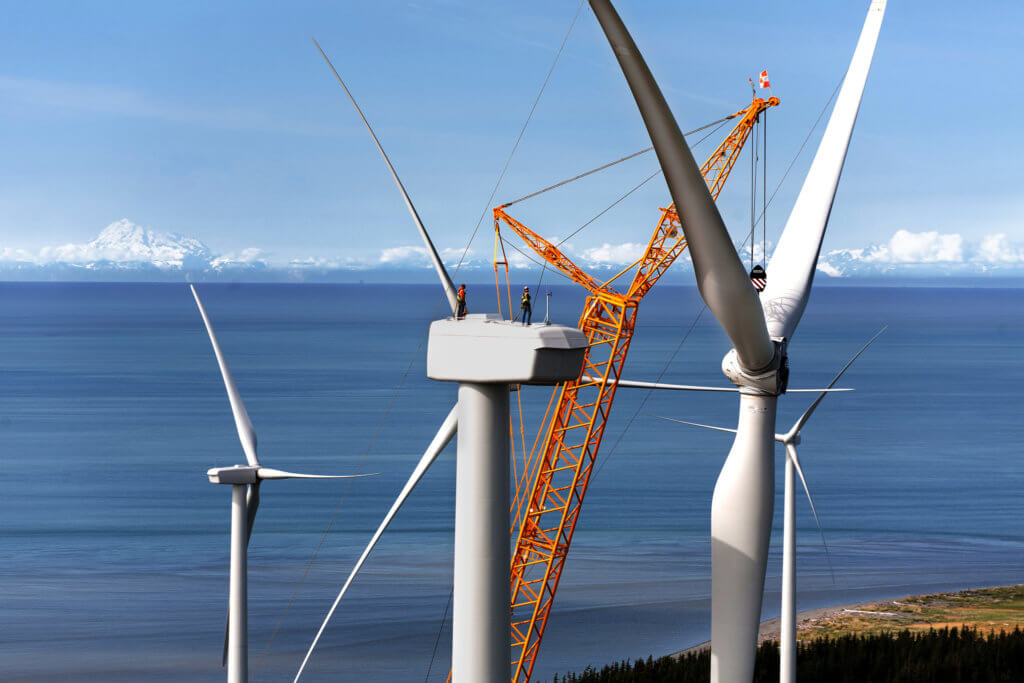Fact check: 5 things Bjoern Lomborg gets wrong about federal incentives supporting wind power
1) fossil fuel subsidies largely outweigh federal incentives for renewables and
2) misinformation about federal incentives for various forms of energy is having a harmful impact on our nation’s ability to enact sensible energy policy.
Unfortunately, the majority of his discussion on energy policy is misleading in and of itself, since debating the dynamics between policies affecting the U.S. energy portfolio and those of other countries around the world is like comparing apples to oranges. To keep the integrity of the debate sound and relatable for U.S. energy policymakers and stakeholders, we’ll limit the parameters of this response to the U.S.

The following points offer not only a fact check on Mr. Lomborg’s claims but also a reminder of why our investment in wind power is a good deal for Americans.
1) The reality about costs
In reality, there is no free market for energy in the U.S.–no energy industry has ever been without some type of federal support. The U.S. has historically relied on using its tax code as de facto energy policy supporting the growth of various forms of energy.
Despite what Mr. Lomborg may claim, subsidies for traditional forms of energy have heavily outweighed those for the wind industry in both total dollar amount and duration. Mr. Lomborg gives his audience just a peek into the total dollar amount of federal support fossil fuels obtain versus wind and other renewables.
Whereas long-term policy certainty for wind power has been the exception, for wind’s competitors it’s been the norm. The primary source of federal support during the majority of wind power’s growth over the last 20 years, the Production Tax Credit (PTC), has been allowed to expire several times – each time pulling the rug out from under a new and growing industry and causing disruption and job losses.
At the same time, the wind industry has had to combat misinformation peddled by well-funded groups bent on skewing the playing field in favor of wind’s competition. Partisan groups like Americans for Prosperity and the American Energy Alliance regularly confuse the public about wind’s affordability, reliability and the PTC. This year is no exception: Americans for Prosperity has publicly declared a $75,000, six-week online ad campaign dedicated to ending the PTC.
2) Policy supporting wind’s growth has worked despite those challenges, but long-term, stable policy is needed
Evidence shows the tax incentives attracting new private investment in wind power are an especially good deal for Americans.
In 2012, the U.S. established itself as a wind energy leader worldwide with nearly a quarter of the world’s installed wind energy capacity. Wind power now reliably provides more than 20 percent of Iowa and South Dakota’s electricity needs and more than 10 percent in nine states.
This is an extraordinary achievement given the almost continuous policy uncertainty in which wind energy companies have operated—policy uncertainty that has made it difficult for them to plan investment for more than a year or two in advance.
3) Translating the economic benefits of wind
Wall Street and Main Street have witnessed remarkable economic benefits associated with wind’s growth. Since 2005, the wind industry has brought over $105 billion in private investment to the U.S. Last year, during its record growth in becoming the number new source of new U.S. electricity generation, wind power attracted $25 billion in private investment to our national economy. Rural landowners, local school districts, and many local businesses have benefitted from the billions of dollars private investors have poured into growing wind power.
A wind power project in Ohio, for example, earned the endorsement of a local school official, who said the million dollars in new taxes the project will pay made the biggest impact on the local school budget he’d seen in his 40-year career. And the High Lonesome Mesa wind farm in New Mexico is providing long-term economic benefit for the Torrance County and Estancia School districts totalling $14 million.
4) Other ways wind benefits our economy
Wind power has created a brand new domestic manufacturing chain that supports 25,000 American jobs within a supply chain of more than 550 manufacturing plants in 44 states. At the start of this year wind power supported 80,000 jobs, and the Department of Energy envisions that with the right policies in place, wind could support up to 500,000 jobs by 2030.
Other economic benefits resulting from adding wind power are often hidden from the public eye. For example, installed wind power benefits farmers, ranchers, and small businesses in rural communities by helping to conserve 37 billion gallons of water annually.
5) Diverse energy mix provides stability, saves money
Adding wind power and other renewable energy projects has helped diversify the U.S. energy mix, making our power supply more affordable and more reliable. Wind power, which uses no fuel and offers stable, predictable pricing, protects against the volatility of fuel prices, keeping costs low for ratepayers. Utility leaders around the country have highlighted this in a series of public statements this year recognizing wind energy as an increasingly competitive choice.
On July 16, David Sparby, president & CEO of Xcel Energy’s Northern States Power, said “wind prices are extremely competitive right now, offering lower costs than other possible resources, like natural gas prices.” And after signing a new deal to add more wind power to its mix, Duane Highly, president & CEO of Arkansas Electric Cooperative Corp., said that his group would continue to pursue energy options (wind) that “provide reliable electricity at the lowest possible cost.”
When you look at the facts, it’s easy to see American wind power is well worth the investment. And while wind’s growth has been impressive, in order to achieve a goal of wind providing 20% of America’s electricity by 2030, Congress needs to provide long-term, stable policy without disruptions in order to maximize wind’s numerous economic benefits.
Update (November 18, 2013): For another review of Mr. Lomborg's column, see "Bjorn Lomborg on energy subsidies: A critical review" from Earth Track.
Photo credit: Iberdrola Renewables





